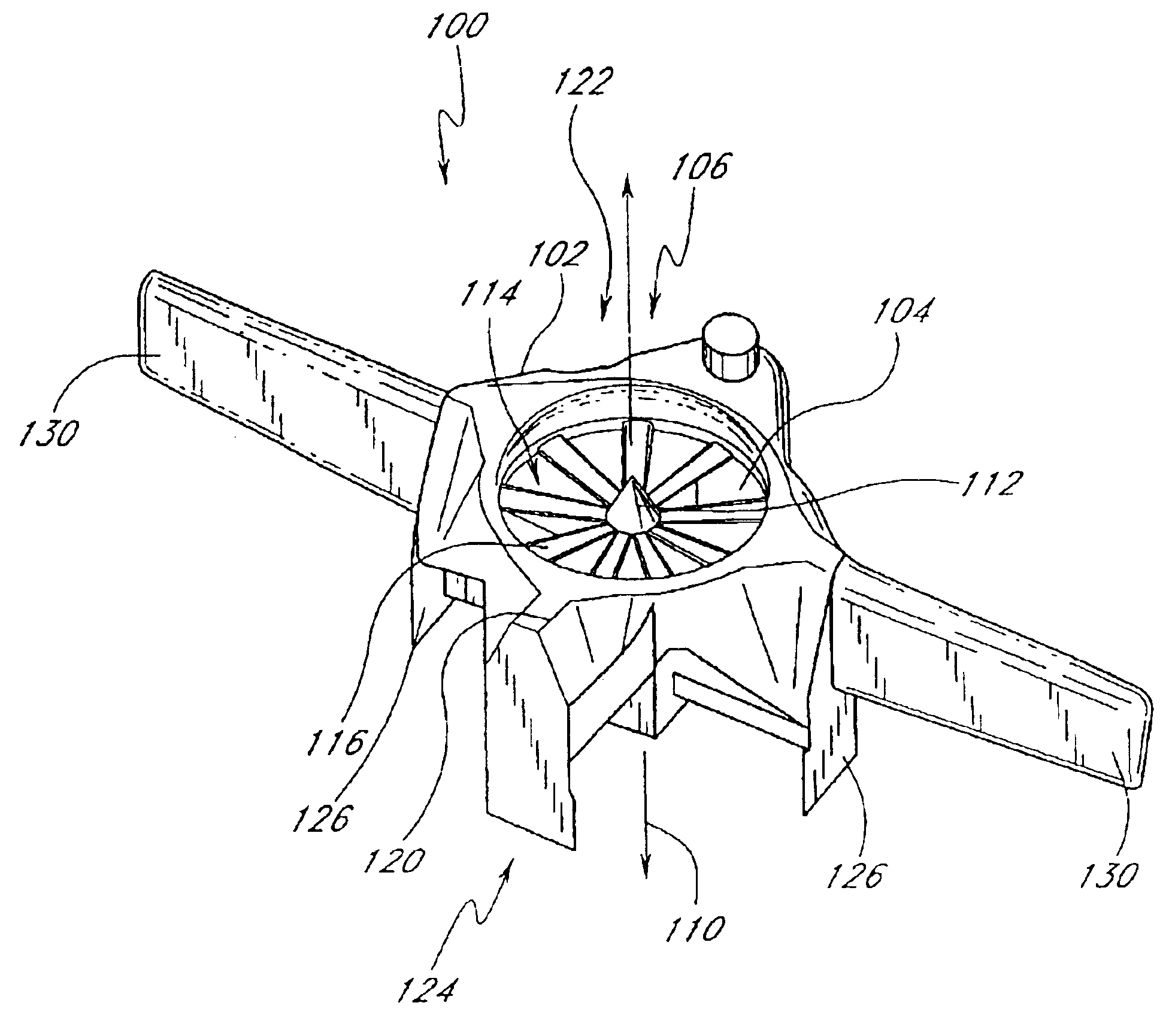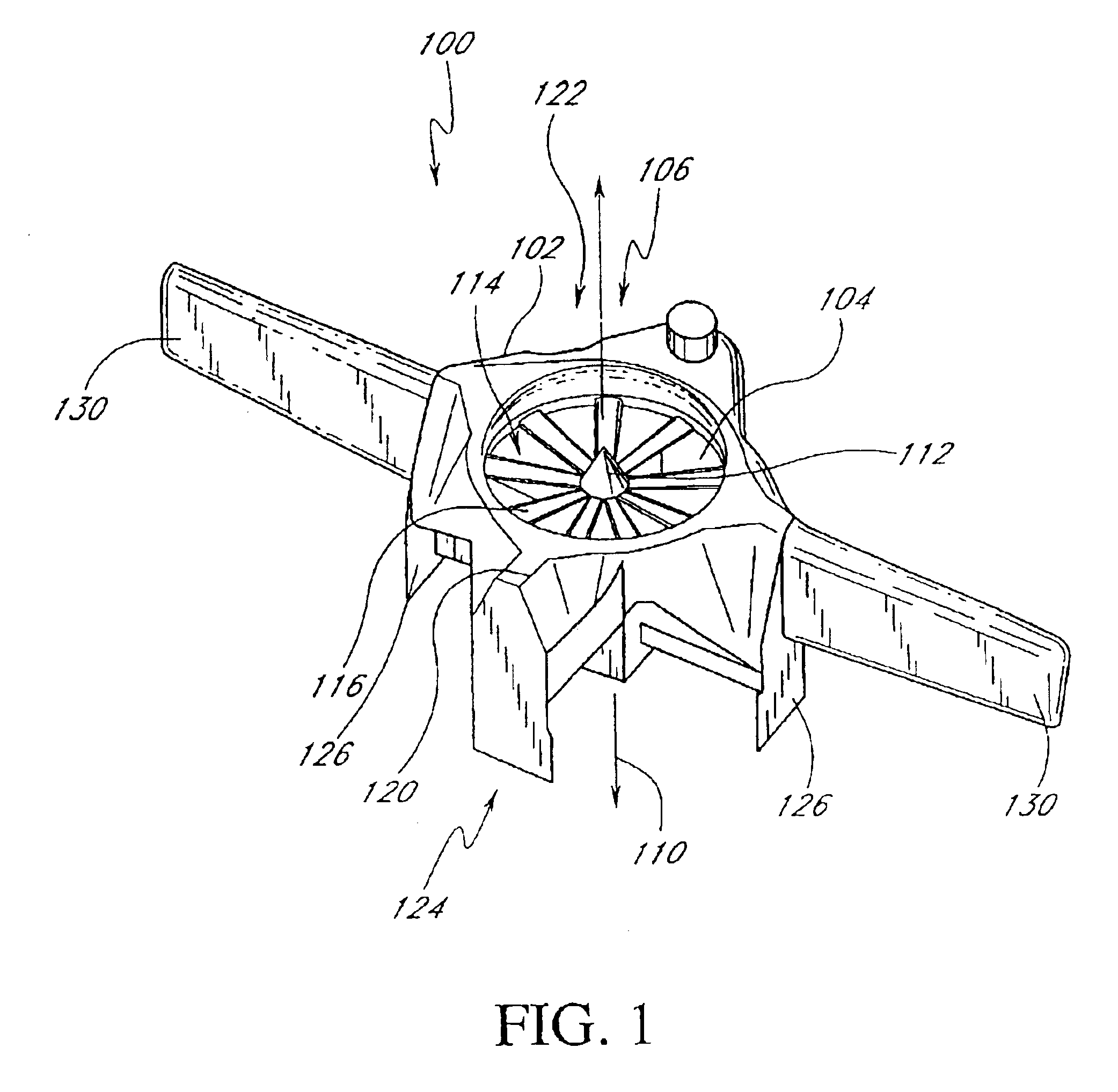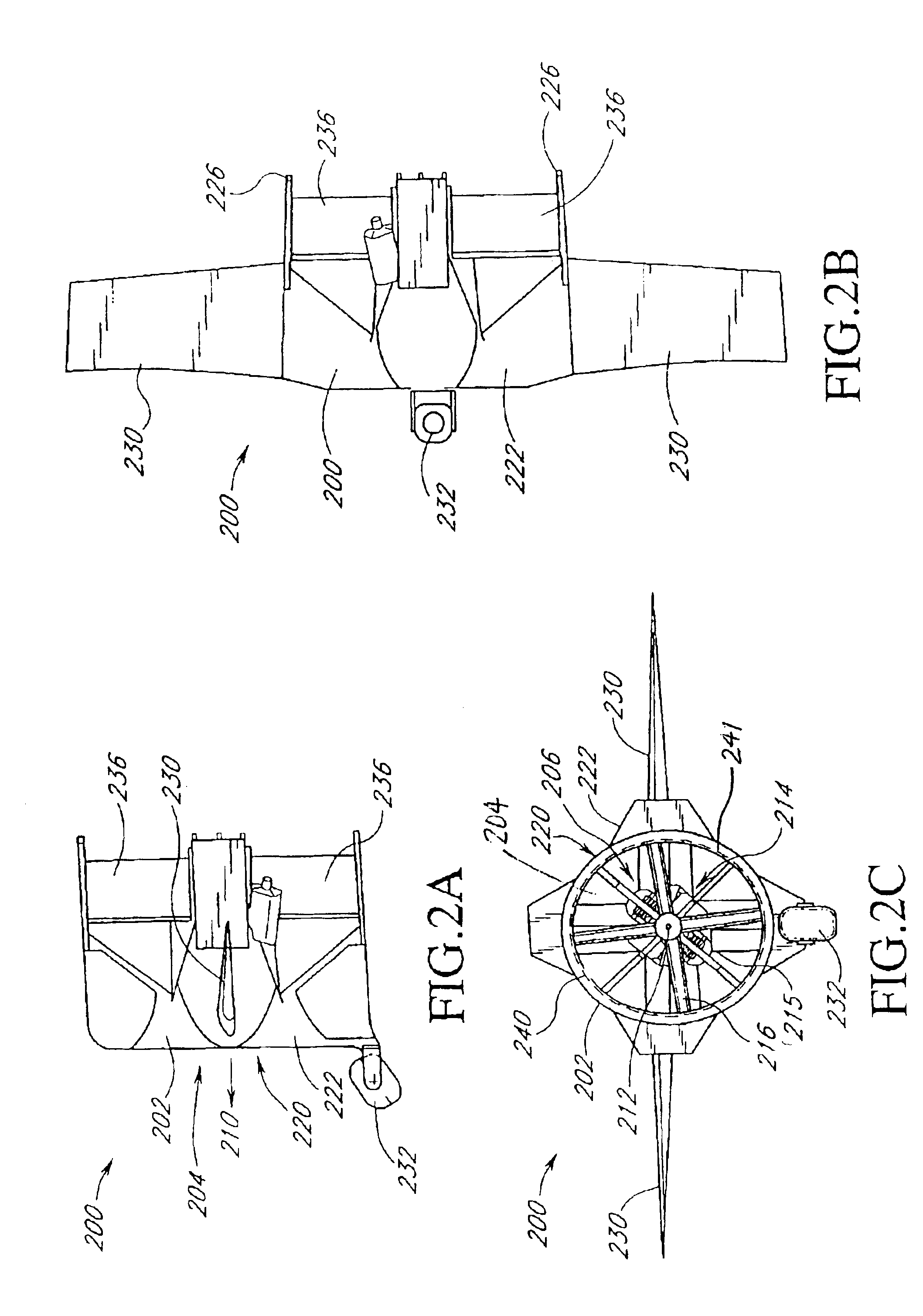Gyrostabilized self propelled aircraft
a self-propelled aircraft and gyrostabilized technology, applied in the field of aircraft, can solve the problems of limited versatility of known prior art, inability to use land-based runways, and inability to control the flight speed of aircraft, so as to achieve stable operation and more rapid horizontal flight
- Summary
- Abstract
- Description
- Claims
- Application Information
AI Technical Summary
Benefits of technology
Problems solved by technology
Method used
Image
Examples
Embodiment Construction
[0027]Reference will now be made to the drawings wherein like numerals refer to like parts throughout. FIG. 1 illustrates an unmanned air vehicle (UAV) 100 that is adapted to be gyroscopically stabilized in a manner that will be described in greater detail below. The UAV 100 in this embodiment has a ducted fan configuration such that a fuselage 102 defines an opening 104 in which a propulsion mechanism 106 is mounted. In this embodiment, the fuselage 102 is generally circular and is generally symmetrical about an axis 110 that extends longitudinally through the opening 104 so as to be coincident with a prop shaft 112 about which a propeller 114 is mounted. As the propeller 114 of the propulsion mechanism 106 is mounted within the opening 104 of the fuselage 102, a configuration of the UAV 100 is generally referred to as a ducted fan configuration as the propeller 114 is mounted within a duct defined by the opening 104. In this embodiment, the propeller 114 incorporates a plurality o...
PUM
 Login to View More
Login to View More Abstract
Description
Claims
Application Information
 Login to View More
Login to View More - R&D
- Intellectual Property
- Life Sciences
- Materials
- Tech Scout
- Unparalleled Data Quality
- Higher Quality Content
- 60% Fewer Hallucinations
Browse by: Latest US Patents, China's latest patents, Technical Efficacy Thesaurus, Application Domain, Technology Topic, Popular Technical Reports.
© 2025 PatSnap. All rights reserved.Legal|Privacy policy|Modern Slavery Act Transparency Statement|Sitemap|About US| Contact US: help@patsnap.com



